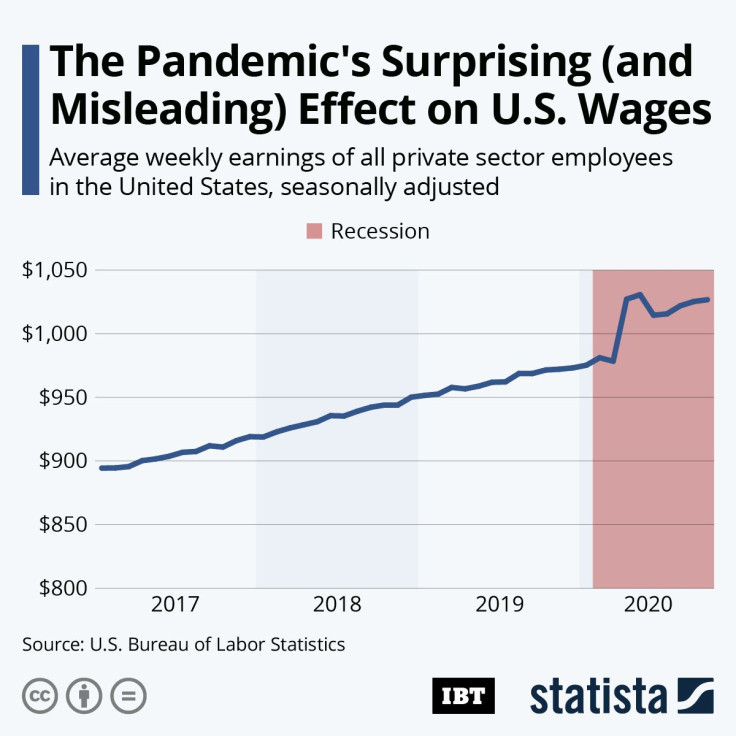Infographic: The Pandemic's Surprising (And Misleading) Effect On U.S. Wages

The International Labour Organization (ILO) published the latest edition of its biennial Global Wage Report on Wednesday, focusing on the impact the COVID-19 pandemic is having on wage levels around the world. Unsurprisingly, the report finds that the ongoing crisis has put downward pressure on wages in two-thirds of the countries observed, with women and low-wage workers particularly affected.
Looking at wages alone can paint a misleading picture, however, as exemplified by the United States. According to monthly figures published by the Bureau of Labor Statistics, wages jumped at the onset of the pandemic and remained elevated ever since. And while that may look like a positive development, it’s actually a sign of an even deeper crisis compared to countries that saw wages slump in recent months.
Due to what the ILO describes as a “composition effect,” average wages are skewed upwards in several countries, especially those with high unemployment levels. When low-wage workers are disproportionately affected by joblessness, as has been the case during the pandemic, the composition of the active workforce changes, resulting in seemingly higher wages. Aside from the United States, Brazil, Canada, France, and Italy have also seen average wages rise at the same time as unemployment levels.











